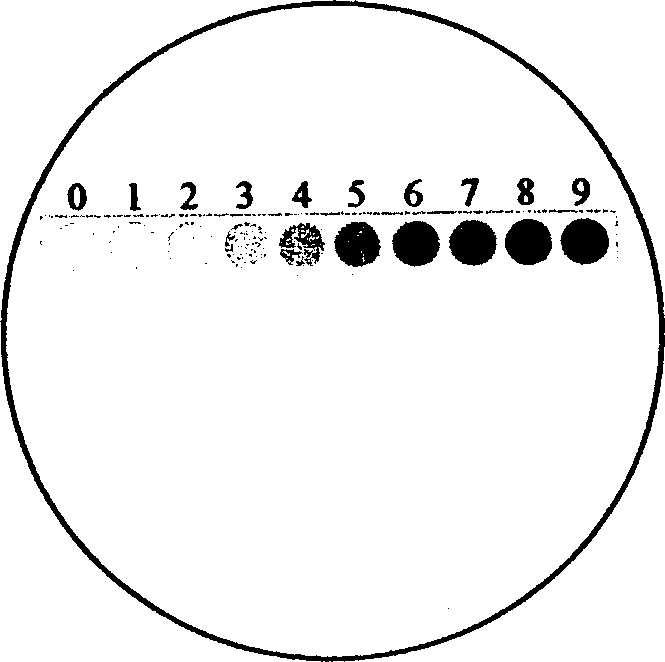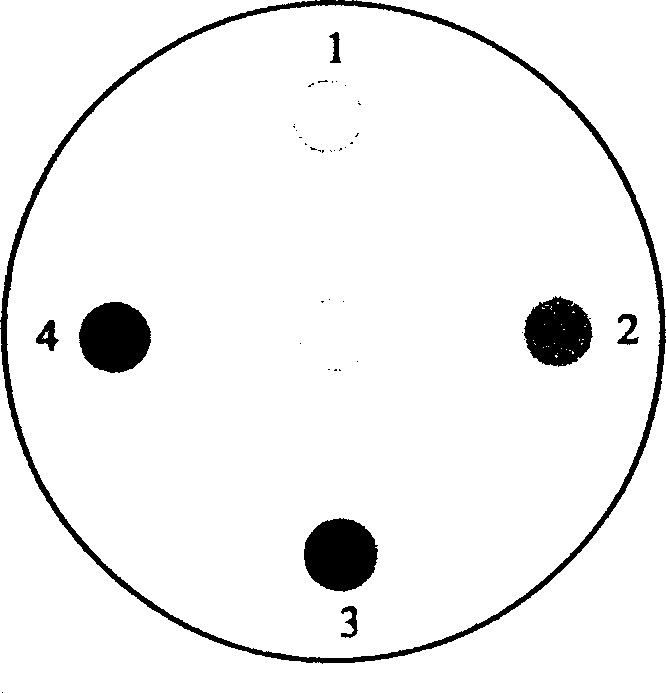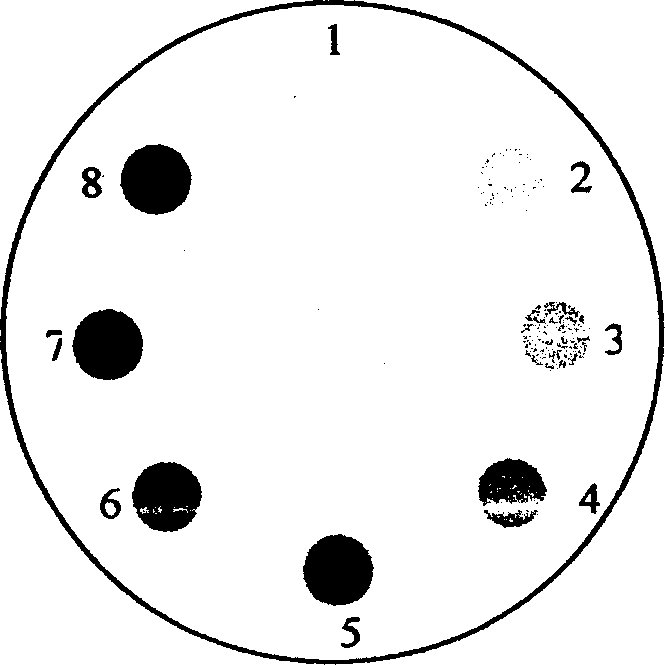Immune tissue chemistry micro colourimeter and its making method
A technology of immunohistochemistry and colorimeters, applied in the field of colorimetric devices, can solve the problems of lack of objective reference standards for color change and limited quantitative analysis, so as to overcome subjectivity and inconsistency, express objectively and accurately, and easily The effect of making
- Summary
- Abstract
- Description
- Claims
- Application Information
AI Technical Summary
Problems solved by technology
Method used
Image
Examples
Embodiment 1
[0017] Such as figure 1 As shown, the substrate of the immunohistochemical microscopic colorimeter is a circular high-transparency film with a diameter of 1.9 cm and a thickness of less than 1 mm. There is a linear transparent ribbon on the circular surface, and the ribbon consists of 10 The individual color points are sorted into ten grades from 0 to 9 according to the brownish-yellow-tan color from light to dark (0 grade is colorless). The color bands on this immunohistochemical microscopic colorimeter are made by photographing copies.
Embodiment 2
[0019] Such as figure 2 As shown, the substrate of the immunohistochemistry microscopic colorimeter is a circular highly transparent glass slide with a diameter of 2 cm and a thickness of 1 mm. There are transparent ribbons arranged in a circle by 4 color points on the circular surface. The 4 color points are sorted from light to dark according to the brownish-yellow tan color and the colorless color point in the center is divided into five grades from 0 to 4 (0 grade is colorless). The ribbons on the immunohistochemical microscopic colorimeter are directly printed on the highly transparent glass substrate by color printing technology (using transparent pigments).
Embodiment 3
[0021] Such as image 3 As shown, the substrate of the immunohistochemical microscopic colorimeter is a circular high-transparency film with a diameter of 2 cm and a thickness of less than 1 mm. There are transparent ribbons arranged in a circle by 8 color points on the circular surface, and 8 The individual color points are sorted from light to dark according to the brownish-yellow tan color, and the colorless color point in the center is divided into nine grades from 0 to 8 (grade 0 is colorless). The manufacturing method of this immunohistochemical microscopic colorimeter is to directly print the color ribbon pattern designed on the computer on the high-transparency film substrate with a color printer with transparent pigments, and then cut into immunohistochemical microscopic colorimetric colorimeters according to the required size. device.
PUM
| Property | Measurement | Unit |
|---|---|---|
| thickness | aaaaa | aaaaa |
| diameter | aaaaa | aaaaa |
| thickness | aaaaa | aaaaa |
Abstract
Description
Claims
Application Information
 Login to View More
Login to View More - R&D
- Intellectual Property
- Life Sciences
- Materials
- Tech Scout
- Unparalleled Data Quality
- Higher Quality Content
- 60% Fewer Hallucinations
Browse by: Latest US Patents, China's latest patents, Technical Efficacy Thesaurus, Application Domain, Technology Topic, Popular Technical Reports.
© 2025 PatSnap. All rights reserved.Legal|Privacy policy|Modern Slavery Act Transparency Statement|Sitemap|About US| Contact US: help@patsnap.com



